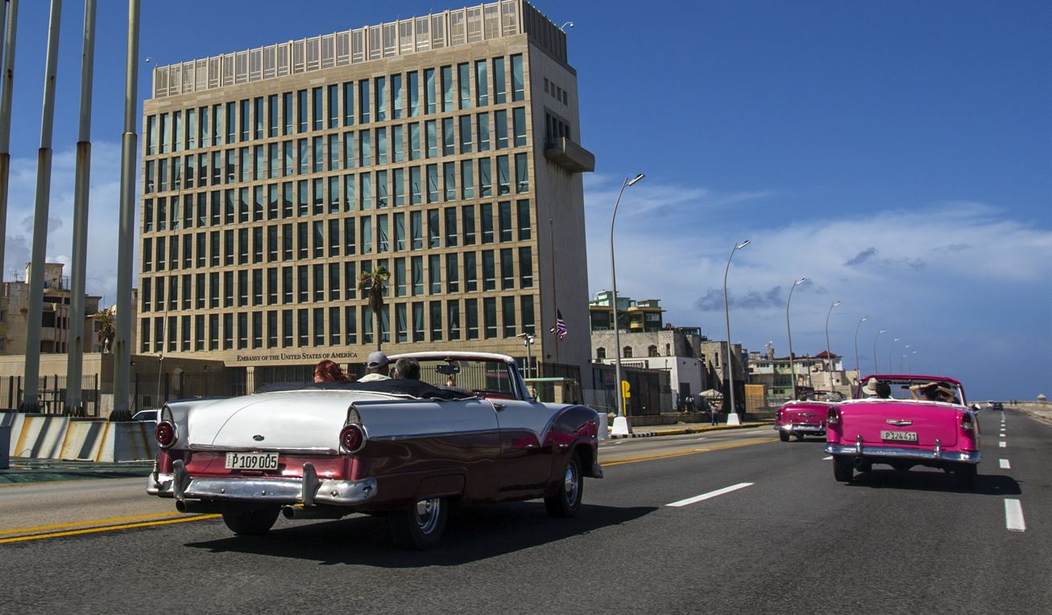The BBC published a really interesting story on Havana Syndrome yesterday. It’s interesting for several reasons. First, it suggests the use of microwaves against human targets has a longer history than we’ve been told. Second, it helps outline why that history suddenly broke into the open after attacks in Havana in 2016. Thirdly, it offers some new information about clinical proof that these attacks really are causing brain injuries in those targeted.
The first part of the story focuses on professor James Lin who, back in the early 1970s, began experimenting with pulsed microwaves using himself as a guinea pig:
He sat on a wooden chair in a small room lined with absorbent materials, an antenna aimed at the back of his head. In his hand he held a light switch. Outside, a colleague sent pulses of microwaves through the antenna at random intervals. If Prof Lin heard a sound, he pressed the switch.
A single pulse sounded like a zip or a clicking finger. A series of pulses like a bird chirping. They were produced in his head rather than as sound waves coming from outside…
Prof Lin recalls that he was careful not to dial it up too high. “I did not want to have my brain damaged,” he told the BBC.
In 1978, Prof. Lin was invited to Moscow by a group of scientists there who had been performing similar experiments. Lin recalls they had “a very elaborate, very well-equipped laboratory.” However, he thought their experiments were more primitive than his own.
Jumping forward, some of the people who claim they suffer from Havana Syndrome have gone to attorney Mark Zaid for help. Zaid argues that the use of microwave radiation to target people had been going on long before the first cases of Havana Syndrome in 2016.
“What’s been going on has been known by the United States government probably, based on evidence that I have seen, since the late 1960s.”
Since 2013, Mr Zaid has represented one employee of the US National Security Agency who believed they were damaged in 1996 in a location which remains classified.
Mr Zaid questions why the US government has been so unwilling to acknowledge a longer history. One possibility, he says, is because it might open a Pandora’s Box of incidents that have been ignored over the years. Another is because the US, too, has developed and perhaps even deployed microwaves itself and wants to keep it secret.
So if there’s a desire on all sides to keep this secret, why did Havana Syndrome become public. The story suggests it’s because Russia decided it wanted the US out of Havana and this seemingly untraceable weapon was a good way to achieve that.
Cuba, 90 miles off the Florida coast, has long been an ideal site to collect “signals intelligence” by intercepting communications. During the Cold War, it was home to a major Soviet listening station. When Vladimir Putin visited in 2014, reports suggested it was being re-opened. China also opened two sites in recent years, according to one source, while the Russians sent in 30 additional intelligence officers.
But from 2015, the US was back in town. With its newly opened embassy and a beefed-up presence, the US was just beginning to establish its footing, collecting intelligence and pushing back against Russian and Chinese spies. “We were in a ground fight,” one person recalls.
And that’s when the first cases of Havana Syndrome began. And if the goal was to drive the US out, it worked. By September of 2017, the US was pulling out staff because of the attacks. At the time, there was confusion about who and what was behind the attacks. Many, who had experienced the sound of the attacks, believed there must be some sort of audio device behind it. But those sounds were likely the same ones Professor Lin experienced when experimenting on himself with microwaves. They are known as the Frey effect.
The consequences of getting caught attacking as many as 200 Americans with a microwave device would be significant. As Marc Polymeropolous, who experienced an attack in Havana in 2017, put it, “That’s an act of war.” But the Russians may have overestimated their ability to avoid detection. The BBC story notes that there is new data supporting the fact that these attacks are very real and not cases of individual or mass delusion:
The BBC has learnt that new evidence is arriving as data is collected and analysed more systematically for the first time. Some of the cases this year showed specific markers in the blood, indicating brain injury. These markers fall away after a few days and previously too much time had elapsed to spot them. But now that people are being tested much more quickly after reporting symptoms, they have been seen for the first time.
Armed with this kind of proof these cases are real, it’s probably only a matter of time until someone responsible is caught. At that point, Russia will simply lie as it always does when caught but hopefully that won’t be good enough to prevent some serious consequences.








Join the conversation as a VIP Member